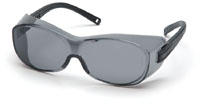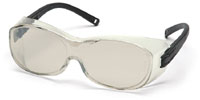Prior to the 1980s, communication and broadcast tower erection, servicing and maintenance was a very small and highly specialized industry. Over the past 30 years, the growing demand for wireless and broadcast communications has spurred a dramatic increase in communication tower construction and maintenance.
In order to erect or maintain communication towers, employees regularly climb towers, using fixed ladders, support structures or step bolts, from 100 feet to heights in excess of 1000 or 2000 feet. Employees climb towers throughout the year, including during inclement weather conditions.
Some of the more frequently encountered hazards include:
- Falls from great heights (must wear fall protection equipment)
- Electrical hazards
- Hazards associated with hoisting personnel and equipment with base-mounted drum hoists
- Inclement weather
- Falling object hazards
- Equipment failure
- Structural collapse of towers
In 2013, OSHA recorded a total number of 13 communication tower-related fatalities. Since the beginning weeks of 2014, there have already been four fatalities at communication tower worksites. This represents a significant increase in fatalities and injuries from previous years, and OSHA is concerned at this trend. OSHA is working with industry stakeholders to identify the causes of these injuries and fatalities, and to reduce the risks faced by employees in the communication tower industry.
1. Check the injured individual(s) immediately and assess his/her condition.
2. Call the nearest Emergency Medical Services (EMS), if necessary. As per your company safety program, make certain that all crew members are capable of giving clear directions to the site, and that all crew members have easy access to the EMS phone number. Site directions and the EMS phone number must be easily and readily accessible to all crew members.
3. After calling EMS, phone the home office and give them as much detail as time allows. An office representative will fill out the required forms.
4. The call to EMS should also alert the local police, so expect them to arrive. If they do not arrive, you will need to call them so they can investigate the accident.
5.While the police are there, ask them to secure the site so that nothing related to the accident is moved by anyone. If you need more than 24 hours to conduct your investigation, ask the police to recommend a security service.
6. Before the EMS leaves, be sure that you have their company name and know where they are taking the injured individual(s).
7. The home office should appoint a temporary spokesperson. Only the spokesperson is allowed to make any statements.
8. OSHA and police officials have the authority to question witnesses. Only provide the necessary information and facts as you know them. Do not speculate.
9. A company representative must remain on location if the police do not arrive.
10. At the first opportunity, call the home office and give them a detailed report regarding who was involved and what happened before, during, and after the accident. The home office will advise you on the next steps to take.
11. Have all personnel who were at the site at the time of the accident write a detailed report regarding their location and actions prior to, during, and after the accident.
12. Take pictures of the accident site as soon as possible following the accident, making certain to include any equipment involved, the perimeter and entrance facing the accident scene, and close-up pictures of any important items.
13. Office personnel will contact the families of the individual(s) involved in the accident when they have enough information to pass along. How to tell loved ones is a delicate situation, and, if deemed appropriate, clergy may be preferred.
- Under no circumstances should employees contact family members of other employees.
14. Office personnel must advise the insurance carrier of the accident. This will enable the insurance company to begin its own investigation procedures.
15. The office needs to determine who is going to conduct the company’s investigation and if that person is not on site, they should be mobilized immediately.
16. The office needs to develop a file on the accident containing all photos taken at the accident scene, copies of all witness reports, copies of all initial written documents, copies of all files concerning personnel at the accident site, copies of all information used on the site, and copies of all contracts, job orders, and correspondence concerning the site. Documentation is of the utmost importance.
17. During your investigation, take detailed pictures again of everything concerning the accident. Duplicate the position of as many photos as possible from the original accident photographs. Make multiple sets of prints of all photos taken for insurance and legal purposes.
18. The customer, tower owner, and landowner need to be contacted by the office personnel as the accident will affect them also.
19. If you are to interview witnesses and involved personnel, be sure to gather all relevant information.
20. If OSHA conducts interviews, the company representative must obtain permission from the employees to be in attendance (this may vary from state to state, so check with your attorney). Employees may be asked to sign a statement and/or note taken by an OSHA representative. Advise your employees that they are under no obligation to sign anything. If, however, they do choose to sign, then encourage them to review their statement carefully, and remind them that they are entitled to ask for a copy. Additionally, if the employee so chooses, he or she may provide a copy to their employer.
21. It is preferable to have a different crew come in and finish the job once OSHA releases the site. However, no work should be continued until all necessary information has been gathered, and the safety of the work site confirmed.
22. A company representative should provide outside psychological help in dealing with an accident before employees return to work.
23. A company representative should offer to assist the family of the individual(s) with hospital or burial arrangements, as well as to inform them about counseling or any other benefits available.
Source: OSHA; NATE


